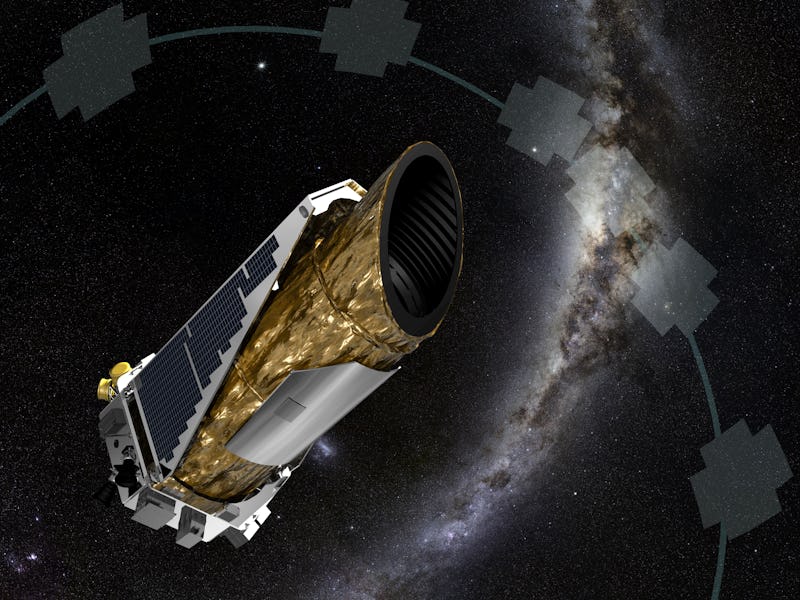What Kepler's New Image May Tell Us About Rosetta's Comet
You can view comet 67P through Kepler's eyes.

Everyone wants a piece of Rosetta, even NASA’s most famous planet hunter — the Kepler Space Telescope. Last month, Kepler put its planet-hunting duties on hold to complete a task no ground-based telescope could: spy on comet 67P/Churyumov-Gerasimenko.
The results of this unique observation will help scientists better understand the actual data collected from the Rosetta mission.
On September 30, the world shed a tear as Rosetta, the beloved comet-chasing spacecraft, crashed into the surface of comet 67P — after spending two years following the primordial hunk of ice and dust through the solar system.
For two weeks leading up to Rosetta’s demise, the comet’s orbit placed it in view during the daytime, preventing Earth-based telescopes from seeing it. Scientists called on Kepler (still operating in its K2 mission) for help.
From Kepler’s distant vantage point, the observatory had a clear view of the comet’s core and tail, snapping a photo of 67P once every thirty minutes.
Within the image, we can see the comet as it passes through Kepler’s field of view from top-right to bottom-left. It’s the bright fuzzy ball racing through the diagonal strip:
Kepler's view of Comet 67P
The white dots in the image represent stars and other regions that Kepler is currently studying in space as part of K2’s tenth observing campaign.
While the images beamed back may not look like much, they are scientifically useful. The long-range view provided by Kepler will not only help put the high-resolution Rosetta data into context, but will give scientists an idea of how much material the comet loses to space each day, which can be determined by measuring reflected sunlight.
Even though Rosetta’s operational mission is over, scientists will be analyzing the treasure trove of data collected for decades to come.